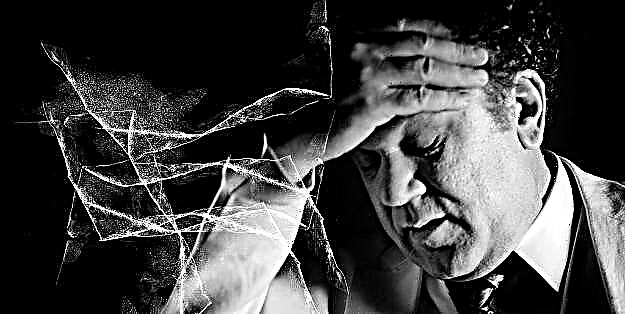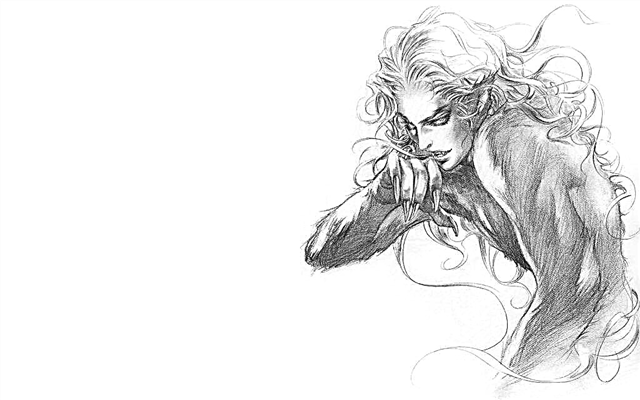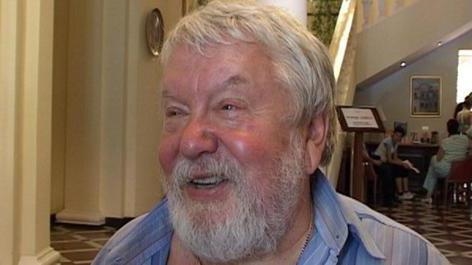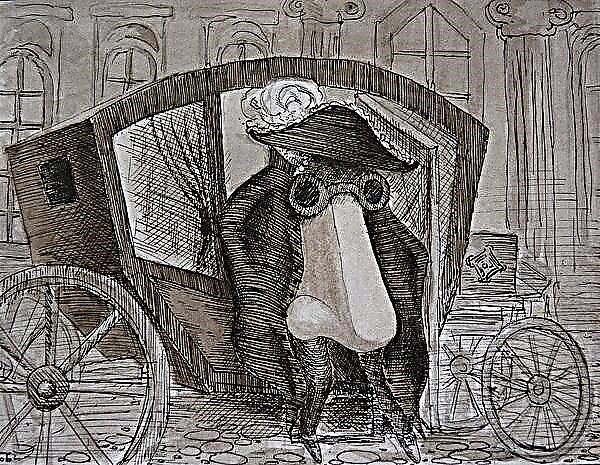Chapter 1. Like a squirrel in a wheel
The essence of traditional meditation is to concentrate fully on breathing, to follow the rhythm of inspiration and exhalation. Concentration on breathing allows you to observe thoughts as they appear and gradually stop fighting them.
At some point, you realize that thoughts come and go themselves, and you are not dependent on them. You will feel how they appear in the head and disappear, like a bursting soap bubble. So you realize that your thoughts and feelings are inconsistent and you have a choice - to succumb to their influence or not.
Awareness helps you to observe yourself, but without criticism, but with compassion.
Benefits of Conscious Meditation
- Increasing the level of happiness and satisfaction with life.
- Reduction of irritability, anxiety and depressive states.
- Improving memory, reaction speed, psychological and physical stamina.
- Regularly meditating people are more satisfied with their relationship with a partner.
- Decrease in the main indicators of chronic stress, including high blood pressure.
- Meditation helps to cope with serious illnesses, such as chronic pain and cancer, weakens alcohol and drug addiction.
- Improving the immune system, preventing colds, flu, and other diseases.
Myths about meditation
Despite the proven benefits, many are still wary of meditation.
- Meditation is not a religion, but a method of mental training. Among practitioners there are many atheists and agnostics.
- Sitting in the lotus position is not necessary. You can meditate almost everywhere.
- Practice does not take much time, but it requires patience and perseverance. Many people notice that meditation frees them from the yoke of time and they have more opportunities to do other things.
- Meditation is not difficult. The terms "success" and "failure" are not applicable to it.
- Meditation does not dull your mind and does not interfere with the achievement of important goals in your career and life, nor does it make you an incorrigible optimist.
- Meditation does not call to accept the unacceptable, but helps to see the world clearer and clearer.
How to find harmony in our crazy world
Our mood changes quite quickly. But why, then, a brief decline in energy or emotional leaps can result in a long period of anxiety, stress, fatigue and depression?
Studies have proven:
- When you feel sad, anxious, or irritated, the main damage is not caused by your mood, but by how you react to it.
- Trying to get rid of a bad mood or a depressed state - or figure out why you feel so bad and how you can fix it - often only exacerbates the situation.
When we feel bad, we try to find out the cause of the bad mood and eliminate it. But our brain, in search of a solution to the problem, begins to pick up memories that reflect the current emotional state. This skill is very important in solving problems, but it does not work with emotions. As a result, short-term sadness can cause a flurry of unpleasant memories and negative emotions.
The fact is that our memory works much better in relation to a specific context (place, feeling, sensations, sounds, visual images). We cannot stop the flow of these memories, but in our power to prevent the further unwinding of the spiral.
Conscious meditation teaches you to recognize memories and self-destructive thoughts. Awareness does not deny the natural desire of the mind to solve problems - it just gives us time and place to choose the best way to solve them.
Chapter 2. Himself an enemy
Our restless mind
Our emotions are clots of thoughts, feelings, bodily sensations and impulses. All elements are interconnected. It used to be that thoughts influence emotions, but recent studies confirm that emotions also affect thoughts. In practice, this means that even a fleeting feeling of sadness can nourish itself and give rise to even more sad thoughts.
Emotions are affected not only by thoughts, but also by the other elements that make up emotions.
Reason Depressed - Depressed Body
To understand how strong the relationship between bodily sensations and perception of the world can be, psychologists conducted an experiment. The band members were asked to watch cartoons and evaluate how funny they were. One part of the group was asked to pinch a pencil on their lips, forcing them to frown. Others watched cartoons with a pencil between their teeth, imitating a smile.
Smiling subjects found the cartoons much funnier than those who had to frown. Conclusion: a smile not only indicates a good mood, but also creates it. It turns a vicious circle.
But the vicious circle also works in a negative direction: sensing a threat, we strain and prepare to rush into battle. The hit-or-run response is controlled by one of the oldest parts of the brain, which often interprets danger too primitively. He does not distinguish between an external threat and an internal one, for example, an unpleasant memory, and rushes into battle with emotions.
Constantly emerging negative thoughts and moods over time create in the mind a kind of beaten paths that gradually become deeper. Because of this, even the most insignificant emotions can have tremendous consequences, but the mechanism of their occurrence is so fragile that it is almost impossible to notice it.
Compare the behavior of man and animal. Animals turn on the hit-or-run mode only at times of open threat. As soon as the threat disappears, the animal goes into normal mode.
However, the human brain is arranged differently, the “hit-or-run” mode is activated under any stress, anxiety or irritability. Activation of this mode can cause a stream of negative memories, which will also be perceived as a danger, and the “hit-or-run” mode will not be turned off in time.
If a person in a stressful situation asks himself: “Why do I feel tired? Something went wrong? What does this fatigue say about me? ”Most likely, he will become even worse.
Our consciousness is constantly striving to solve the problem of a depressed state, but a depressed state is an emotion, it does not require a solution, it can only be felt.
Trying to get rid of emotions also leads to undesirable results. Trying to solve the problem of bad mood, you use rational-critical thinking. You see yourself in a certain place (you are unhappy), you know where you want to be (be happy).
Next, an action mode comes into play that can efficiently solve problems and complete tasks. It helps to gradually get from the starting point to the end, breaking the path into small segments and following them. This happens so quickly that we often do not suspect this process. This is how we orient ourselves, drive a car, plan a schedule.
But when working with emotions, this method does not help, but only exacerbates the situation. The problem remains, moreover, it is analyzed, which means it will most likely cause a stream of negative emotions and memories.
How to get out of a vicious circle
The mode of action is not the only way our consciousness functions, but we often abuse it. Our consciousness not only thinks, it is aware of what it thinks.
This is pure awareness, which allows you to feel the world directly. Pure awareness goes beyond thinking and allows you to interrupt the negative internal dialogue, impulses and emotions.
Chapter 3Awareness of one’s own life
Awareness mode is another mode of interaction with the world. Conscious meditation allows you to learn to switch to awareness mode.
A conscious understanding, or awareness, can be achieved when our consciousness is here and now, and when we learn to concentrate on the current moment and state of things, without appreciating them.
By practicing mindfulness, we begin to see the world as it is, and not as we expect it, we want, or, on the contrary, are afraid to see it.
Seven characteristics of modes of action and awareness
1. Autopilot or informed choice
The mode of action helps bring things to automatism thanks to habits. But when there is too much automatism, it can become dangerous. You can think, work, eat, walk or drive a car, not paying attention to what you are doing, and there is a danger that most of your life will pass by. Awareness returns us to the “here and now” state where you are able to make a conscious choice and have certain intentions.
Many of us act consciously only a couple of hours a day. If you have to live another 50 years, but there will only be 16 conscious of them. If you double the number of conscious hours, then your life expectancy will double.
Of course, not only quantity is important, but also quality. According to the results of research, people practicing meditation are less prone to anxiety and stress, more relaxed, energetic and happy with life.
2. The ability to analyze or the ability to feel
The mode of action requires constant reflection, plans, memories. This makes us spend more and more time in our own thoughts, not noticing what is happening around.
Awareness allows you to be on the same wavelength with your senses, to see, hear, touch, smell and taste, as if for the first time, imbued with sincere curiosity.
3. Fight or acceptance
Consciousness in the mode of action compares the real world with the world of our thoughts and dreams. When all attention is focused on this discrepancy, our field of view is narrowed, and we strive to achieve perfection in any way.
In mindfulness mode, we allow the world to be what it is. But this does not mean obedience to fate, it only allows you not to argue with her, to refute or justify.
4. Our thoughts: reality or products of consciousness
In action mode, we begin to consider thoughts as part of reality. With this attitude, thoughts generated by stress begin to play against us.
Awareness teaches us that thoughts are just thoughts, and they should be treated as events occurring in consciousness, and not in reality.
5. Problem situations: avoid or get close to them
In the mode of action, consciousness solves problems, taking into account not only our goals, and the places where we are going, but also our anti-goals and places we don’t want to go to. It is reasonable to travel from point A to point B, but the problem of fatigue, sadness, nervous tension cannot be solved this way.
The awareness mode helps to show interest in the most complex states of consciousness that you prefer to avoid. Awareness is not manifested in convincing yourself not to worry or not to be sad. On the contrary, it helps to see your own sadness, fatigue and exhaustion and turn to face them and any other emotions that threaten to swallow you. Such a compassionate approach can gradually dissipate the power of negative feelings.
6. Time travel or life here and now
The mode of action is the future (our dreams) and the past (our memories). They are indispensable in everyday life, but they are inconsistent and depend on our mood at a certain moment.
Meditation trains awareness in such a way that it tracks thoughts as they appear, and so that you can live your life as it happens. This does not mean that you will be "locked up" in the present.You can still remember the past and plan the future, but the awareness mode will allow you to see them more objectively.
7. Exhausting or nourishing activities
In the action mode, your consciousness submits not only to autopilot, but also to important career and life goals. In addition, it spends a lot of energy on housekeeping, caring for children and elderly relatives. These goals are justified, but they take a lot of time and effort, so there is always the temptation to focus on them, ignoring everything else, including one’s own health and morale.
Awareness mode restores balance, helping to understand what nourishes and what depletes your internal resources.
Deliberate gearshift
Conscious meditation will gradually teach you to feel the seven aspects described above and determine in what mode your consciousness is working. If you manage to switch any of these aspects, the others will switch themselves.
How happiness takes root
Conscious meditation makes stronger and more active parts of the brain associated with positive emotions - happiness, compassion and sympathy.
For many years it was believed that the basic level of happiness does not change throughout life. But a few years ago, this assumption was refuted, it was found that the practice of conscious meditation makes people happier.
Other proven benefits of meditation:
- Increases immunity.
- It activates the islet cortex, which is responsible for empathy.
- Promotes a good mood.
- Increases autonomy.
- Improves physical health.
- Reduces depression.
Mindfulness and emotional stability
It is proved that the practice of mindfulness significantly increases emotional stability, that is, a person’s ability to withstand various blows of fate.
After completing a conscious meditation program, participants not only became happier, more energetic and less stressed, but also gained more control over their own lives.
Chapter 4. Eight-week program of conscious meditation
Habits
In addition to the practice of meditation, it is necessary to do exercises to get rid of habits during each week. They are aimed at developing curiosity and competent response to everything that happens around.
The choice of time and place for meditation
The program can be completed at any time, but it is best to set aside 8 weeks for it.
To find time for daily practice, you should perceive meditation as a way to be yourself, self-improvement.
Taking the time to practice, take care of the conditions for meditation. You should be warm and comfortable. Turn off the phone, warn colleagues and those who may interfere with you.
Meditation does not always bring pleasure - this is normal.
Do meditation every day until it becomes a habit.
What do you need.
- A room or place where no one and nothing will distract you.
- The rug on which you will lie or a chair / pillow to sit on.
- Warm plaid.
- A pen or pencil to record your observations from time to time.
Caution
It will often seem to you that nothing comes of it. Your consciousness will not want to calm down, thoughts will prevail over you one after another. It will resemble a fight with a snake.
All this does not mean failure at all, but it is at these moments that it is important to continue what has been started and to do it kindly.
Chapter 5. The first week. Life on autopilot: is it life?
In the first week, you will see your own autopilot in action and understand what happens if you turn it off.
Practice:
- "Raisin meditation."
- Everyday activities that we usually don’t notice (for example, brushing your teeth).
- Meditation "mindfulness of the body and breathing" twice a day.
- Habit Exercise.
Chapter 6. The second week. So that the mind remembers the body
The second week uses a simple “body scan” meditation, which helps to understand the differences between a sensation and our perception of that sensation. The “body scan” meditation helps to train the mind in order to focus directly on bodily sensations without evaluating or analyzing them.
Practice:
- Body scan meditation at least twice a day, six out of seven days.
- Perform another daily activity consciously - this week is new.
- Get rid of habits exercise - take a walk at least 15 minutes at least once this week.
Chapter 7. Third week. Help the mouse get out of the maze
The third week starts from the first two and includes the practice of conscious movement based on yoga. They help the mind to continue reuniting with the body.
Practice:
- The eight-minute meditation is “conscious movement,” then another eight-minute meditation is “breathing and body”.
- A “Three Minute Breathing Meditation,” which you need to do twice a day.
- Get rid of habits exercise “How to learn to value TV”.
Chapter 8. Fourth week. What do thoughts and rumors have in common
In the fourth week, you will get acquainted with the “sounds and thoughts” meditation, which helps to understand that you yourself, without wanting it, think too much about something. You will learn to see your thoughts and feelings from the outside and track how they come in the space of conscious attention.
Practice:
- The eight-minute meditation is “breathing and body” and then the eight-minute meditation is “sounds and thoughts”. We recommend that you do this twice a day.
- A “Three-Minute Breathing Meditation,” which you must do twice a day, anytime you need it.
- Getting rid of habits: go to the cinema.
Chapter 9. The fifth week. How to deal with difficult situations
Fifth week meditation - “researching a difficult situation” - helps to respond without fear to various problems that arise from time to time in life, and not to avoid them.
Practice:
1. Perform the following 3 meditations once a day, one after another:
- Eight-minute meditation "breathing and body."
- Eight Minute Sounds and Thoughts Meditation
2. A ten-minute meditation "study a difficult situation."
3. "Three-minute breathing meditation," which must be performed as before.
Chapter 10. Sixth week. To live in the present or in the past
In the sixth week you will have the opportunity to develop the ability to approach openly, with interest, curiosity and compassion in solving various problems.
Practice:
1. A ten-minute “friendly meditation” six days a week. It can be done without preparation, it can be used as preparation for meditation from the first or third week.
2. “Three-minute breathing meditations” at least twice a day.
3. One of the following habits elimination exercises:
- Get your life back.
- Do something good for the other person.
Chapter 11. The Seventh Week. When did you stop dancing?
In the seventh week, you have to explore the close connections between everyday activities, activities, behavior and mood.
Practice:
- Choose a meditation from which you felt a significant improvement: for example, it helped you relax or come to terms with your surroundings.
- Choose a meditation that you could not overcome the first time: it seemed difficult or you have a feeling that it will be useful for you to repeat it.
- “Three-minute breathing meditation” at least twice a day.
Chapter 12. The eighth week. Your free and priceless life
The practice of the eighth week will help you incorporate awareness into your daily activities so that you can use it when it is most needed.
The technique of awareness can serve as a reserve parachute for you, but you need to work on it every day, collecting the parachute in pieces so that at the crucial moment it is ready.
For this:
- Start your day consciously. Opening your eyes, pause, take five slow breaths.
- Use the “breathing meditation”to return to awareness during the day.
- Continue to practice mindful meditation, as far as possible, performing full-fledged meditations, which will complement short “meditation-respite” and help maintain conscious attention in everyday life.
- Make friends with your feelings. Whatever feelings you feel, try to treat them openly and kindly.
- Arrange yourself a “breathing meditation”when you feel tired, irritated, anxious, angry or other strong emotions.
- Be aware of your actions. Whatever you do, try to maintain conscious attention throughout the day for as long as you can.
- Exercise more. Try to walk more, ride a bicycle, work in the garden or go to the gym - any physical exercises help in creating a parachute.
- Remember about breathing. Your breath is always with you, it helps you to be in the present.
Remember the advice that yoga instructors always give: the hardest part is movement.












